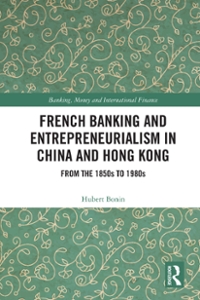Exercise 6.2 (Hard) Consider an economy with many identical households. Each household owns a business that employs both capital (machinery) & and labor / , to produce output y. (The "d" is for demand.) Production possibilities are represented by y = Ak"(/,) ". The stock of capital that each household owns is fixed. It may employ labor at the prevailing wage w per unit of labor Za. Each household takes the wage as given. The profit of each household from running its business is: (6.9) T=y- wa= Ak(la)" - wid. 1. Determine the optimal amount of labor for each household to hire as a function of its capital endowment & and the prevailing wage w. Call this amount of labor ? Exercises 55 2. Plug /; back into equation (6.9) to get the maximized profit of the household. Call this profit ,*. 3. Each household has preferences over its consumption c and labor supply . These preferences are represented by the utility function: u(c, () = e?(1 -1,)?. Each house- hold has an endowment of labor can be used in the household's own business or rented to others at the wage w. If the household supplies labor /,, then it will earn labor income wis. Output, wages, and profit are all quoted in terms of real goods, so they can be consumed directly. Set up the household's problem for choosing its labor supply /s. Write it in the following form: max {objective} subject to: constraints choices 4. Carry out the maximization from part 3 to derive the optimal labor supply (- 5. Determine the equilibrium wage w* in this economy. 6. How does the equilibrium wage w change with the amount of capital & owned by each household? 7. What does this model imply about the wage differences between the U.S. and Mex- ico? What about immigration between the two countries?43. You are given: i) An investor short-sells a non-dividend paying stock that has a current price of 44 per share. ii) This investor also writes a collar on this stock consisting of a 40-strike European put option and a 50-strike European call option. Both options expire in one year. iii) The prices of the options on this stock are: Strike Price Call option Put option 40 8.42 2.47 50 3.86 7.42 iv) The continuously compounded risk-free interest rate is 5%. V ) Assume there are no transaction costs. Calculate the maximum profit for the overall position at expiration. (A) 2.61 (B) 3.37 (C) 4.79 (D) 5.21 (E) 7.3944. You are given the following information about two options, A and B: i) Option A is a one-year European put with exercise price 45. ii) Option B is a one-year American call with exercise price 55. iii) Both options are based on the same underlying asset, a stock that pays no dividends. iv) Both options go into effect at the same time and expire at f = 1. You are also given the following information about the stock price: i) The initial stock price is 50. ii ) The stock price at expiration is also 50. iii) The minimum stock price (from / = 0 to f = 1) is 46. iv) The maximum stock price (from f = 0 to f = 1) is 58. Determine which of the following statements is true. (A) Both options A and B are "at-the-money" at expiration. (B) Both options A and B are "in-the-money" at expiration. (C) Both options A and B are "out-of-the-money" throughout each option's term. (D) Only option A is ever "in-the-money" at some time during its term. (E) Only option B is ever "in-the-money" at some time during its term.32. Judy decides to take a short position in 20 contracts of S&P 500 futures. Each contract is for the delivery of 250 units of the index at a price of 1500 per unit, exactly one month from now. The initial margin is 5% of the notional value, and the maintenance margin is 90% of the initial margin. Judy earns a continuously compounded risk-free interest rate of 4% on her margin balance. The position is marked-to-market on a daily basis. On the day of the first marking-to-market, the value of the index drops to 1498. On the day of the second marking-to-market, the value of the index is X and Judy is not required to add anything to the margin account. Calculate the largest possible value of X. (A) 1490.50 (B) 1492.50 (C) 1500.50 (D) 1505.50 (E) 1507.50 IFM-01-18 Page 16 of 105 33. Several years ago, John bought three separate 6-month options on the same stock. Option I was an American-style put with strike price 20. Option II was a Bermuda-style call with strike price 25, where exercise was allowed at any time following an initial 3-month period of call protection. Option III was a European-style put with strike price 30. When the options were bought, the stock price was 20. When the options expired, the stock price was 26. The table below gives the maximum and minimum stock price during the 6 month period: Time Period: 15 3 months of Option Term 2" 3 months of Option Term Maximum Stock Price 24 28 Minimum Stock Price 18 22 John exercised each option at the optimal time. Rank the three options, from highest to lowest payoff. (A) I> II > III (B) I > III > II (C) II > I > III (D) III > I > II (E) III > II >










